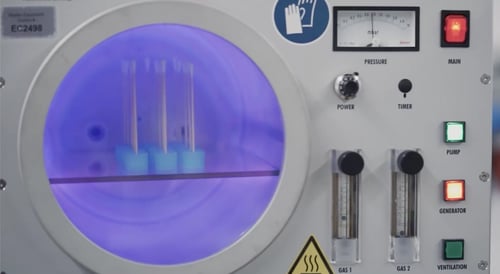To measure a surface’s adhesion ability we assign them a
dyne level. A dyne level is the measure of surface energy. The more surface energy or higher
dyne level a surface has, the better paints and glue will adhere to it.
Dyne levels are an important measure for the automotive industry as well as in the fabrication of plastics. Using Thierry’s
plasma technology you can increase a surface’s dyne level by having it undergo a process called surface activation. Then, to measure the effect of the
surface activation you can conduct dyne tests before and after to calculate how much the
dyne level increased.
Determining a Dyne Level Using a Dyne Test
When trying to evaluate the
dyne level of a surface, an effective, cheap, and simple method is called a dyne test. Dyne tests consist of a series of pens or bottles that have liquid with various labeled
dyne levels. If the liquid is applied to a surface and it "wets out" and does not bead up right away, the surface has a higher dyne level than the liquid. By increasing the
dyne level of the dyne test liquid until it beads up on the surface, you can find an accurate range of what the dyne level of the surface is.

